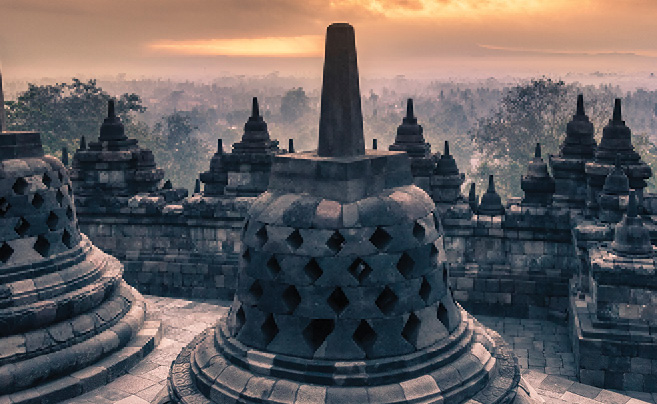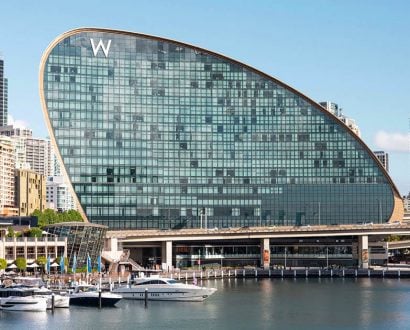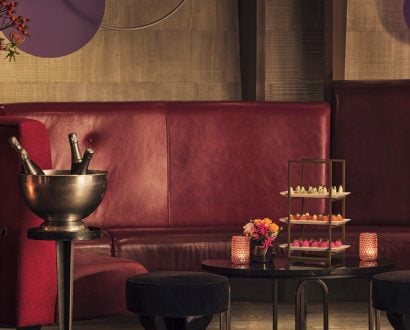Evening is stealing across the plains of central Java. The call to prayer drifts over the fields and bamboo groves; volcanic peaks are dramatically silhouetted against the red sky. A handful of farmers are making their way home through the fields. Me? I’m sipping a chilled soursop martini, perched on the edge of the rice paddies, a carpet of rose petals at my feet. This, I figure, is as relaxed as it gets.
I will soon be proven wrong.
Central Java may not be able to compete with Bali for visitor numbers but—perhaps for that very reason—it is a much more tranquil place. Whether you are hiking through its breathtaking landscapes, immersing yourself in its artistic heritage, or just taking time out, you will find yourself breathing deeper and moving slower. A sense of calm lies over this land like a gently draped shawl.
It has always been this way. Central Java has a long history as a spiritual centre, and its ancient temples, erected 1,000 years ago by neighbouring Buddhist and Hindu dynasties, are among its most popular attractions. Some of the most impressive temples in Asia are here, such as the great Hindu complex of Prambanam, where the three main temples—dedicated to Vishnu, Shiva, and Brahma—are surrounded by hundreds of smaller shrines—some restored; some still unexcavated. The temple’s intricately carved friezes—depicting thousands of figures fighting, loving, worshipping, and everything in between—are an extraordinary artistic achievement.
Similar friezes can be seen on the mighty Buddhist shrine, Borobodur, around 90 minutes away. Very little is known about who built the world’s largest Buddhist monument or why, but it has become famous for its serenely simple structure: a series of concentric terraces decorated with stupas.
My hotel, the luxurious Amanjiwo resort, is just 10 minutes away from Borobodur, with views of the monument featuring right across the property. The location makes it easy to rise early one morning and head to Borobodur to watch dawn break. Only a handful of other visitors have made it here for sunrise; exploring such a magnificent monument without crowds is a rare treat.
As I examine the friezes up close, I notice the similarities with the ones at Prambanam.
It is believed that craftsmen from India worked on both temples, and it appears that, even 1,000 years ago, finding good tradesmen was a challenge. At least one of the contractors appears to have been either absent-minded or just no good at following instructions: I come across one depiction of the Buddha waving multiple arms like a Hindu deity.







